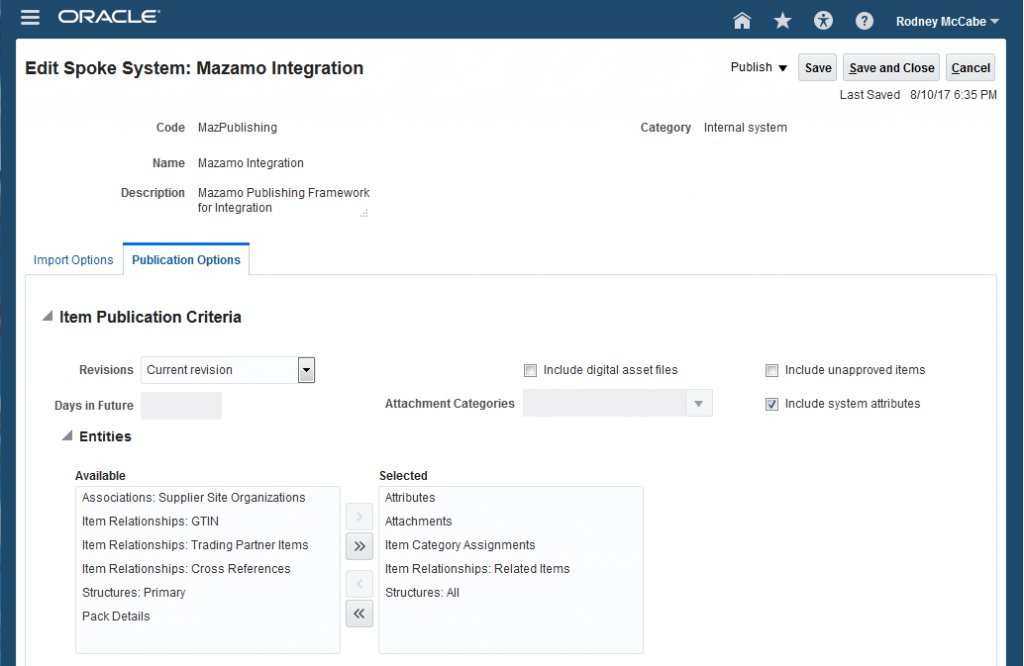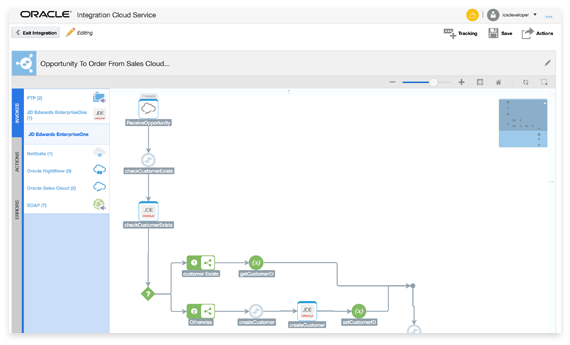It’s amazing to see how our clients have been embracing the new cloud offerings from Oracle lately. A reoccurring theme however, is a growing concern about how they will integrate the new cloud Product Development and Product Data Hub with their other enterprise systems. Fortunately Oracle has thought of that and provided two different ways to export information. This blog series will show you how to configure both methods for use in your own organization.
Currently the two available options for outbound integrations are through the Publishing Framework and an event system exposed through Oracle’s Integration Cloud services (ICS). Obviously if you know exactly what data you are after, you can go through web services but generally speaking, external enterprise systems will not know what has changed unless you tell it. The key differences in the systems are that the Publishing Framework is a scheduled batch export task while ICS is event driven and can be leveraged inside of an integration flow.
The Publishing Framework relies on a spoke system definition to know what to export and a scheduled job to export the information to a specific location. Advanced options can allow configuration of an ongoing task that will publish content from the last execution time. Upon the completion of the export task, package will be created and placed in the specified content server location. For those familiar with Agile PLM’s Agile Content Services (ACS), it is a similar approach. The package will contain an XML file inside of a ZIP file. Be advised it is a different XML schema though. To begin an integration flow the integrator simply needs to poll the directory for new packages and pick them up for processing.


The second integration method leverages Oracle ICS. This method only requires the definition of a connection and once it tests as successful, it can be used in an ICS flow. When the integrator drops the connection into a flow, an event type can be selected, such as Item Create or Item Update. Then the orchestration or integration map can but completed to propagate the data as needed. The advantage ICS has over the Publishing Engine is that many of the Oracle products already have connectors available. Again, this is an event driven model, not a batch process.

In summary I would like to invite you to embrace the change. Moving to the cloud can be a scary thing for companies with a long history of on premise application usage but in terms of integration, Oracle has you covered. Over the next couple of blogs, I will demonstrate show you how to create these endpoints in the cloud; hopefully it motivates you to move to the cloud too!
